Abstract
This paper describes a research partnership between the people of Akwesasne and researchers from the State University of New York at Albany for the study of polychlorinated biphenyls and the health of Mohawk youth. The study is distinctive because its goals have been set by the scientists and the community members and is being conducted jointly by these groups. The research partnership recognizes the history of relationships between native and nonnative peoples, particularly scientists, and seeks not only to fulfill certain scientific goals but to further community ones as well. The relationship is based on three principles: mutual respect, mutual equity, and mutual empowerment. These principles guided every aspect of the research process. The project goals were determined jointly to maximize data quality and minimize the intrusion of research activities into the lives of community members. Data collection is performed by research assistants who received extensive and ongoing training in data collection methods, and who are members of the community. Feedback procedures were designed by community members and scientists jointly to maximize understanding. Feedback regarding individuals' pollutant levels and assessments of growth and development are provided to each individual. Information about community pollutant levels are provided to the community. Hypothesis testing is carried out by research scientists, and the results presented first at a community meeting. Research conducted in this way--as a partnership--requires more communication, discussion, and travel, but the result is mutual satisfaction and growth.
Full text
PDF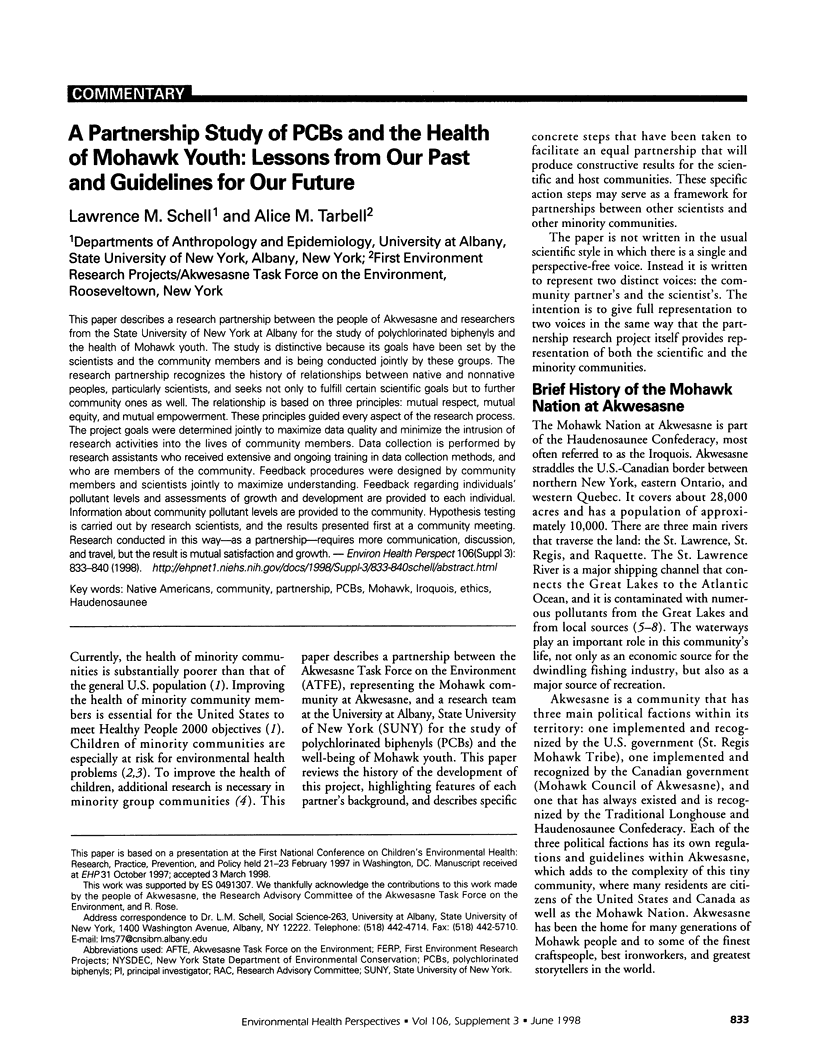
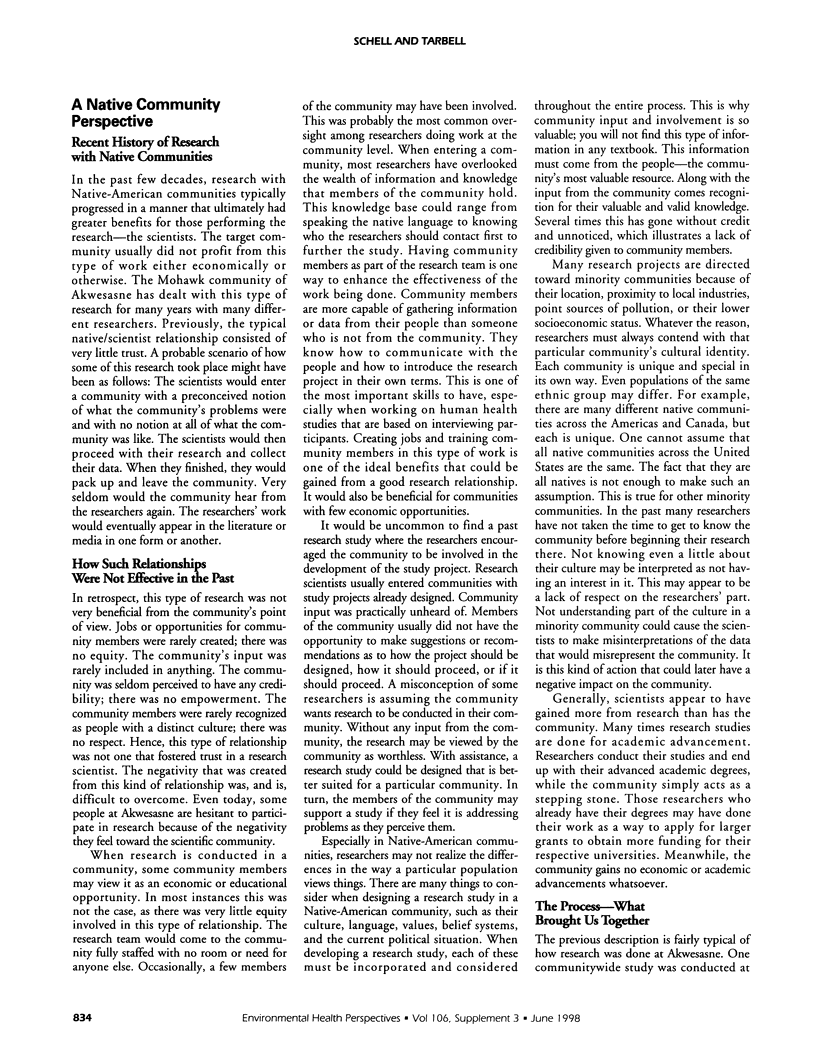
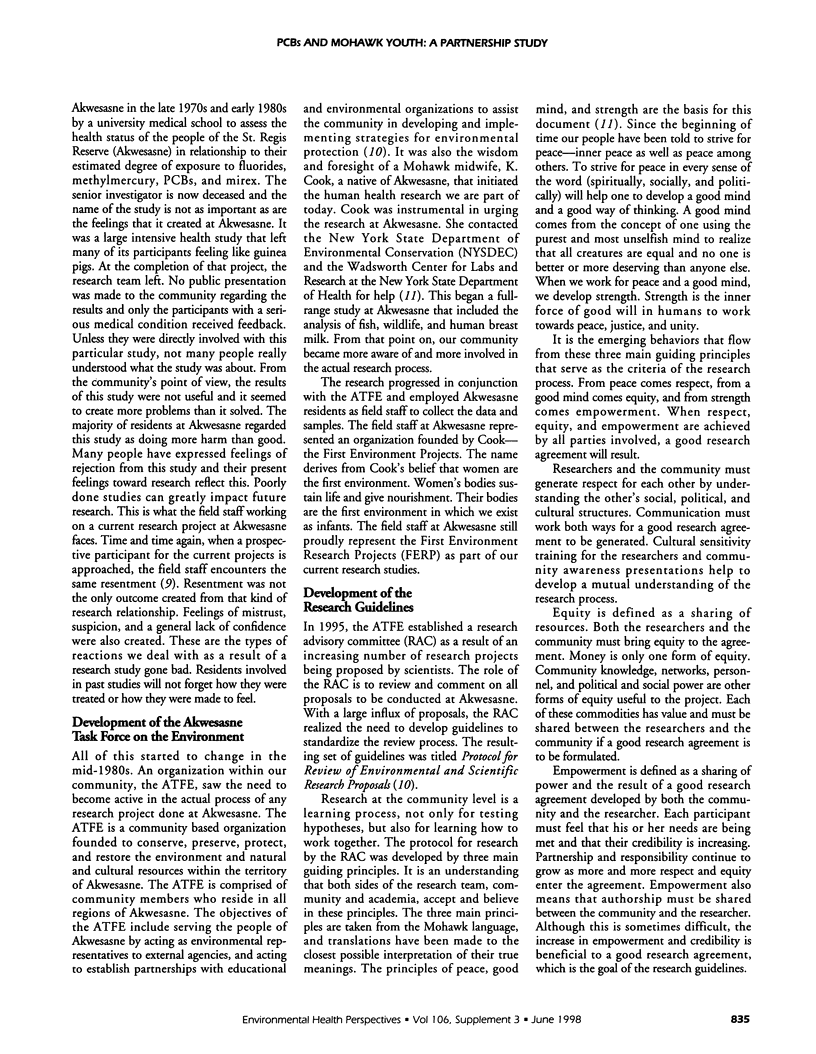
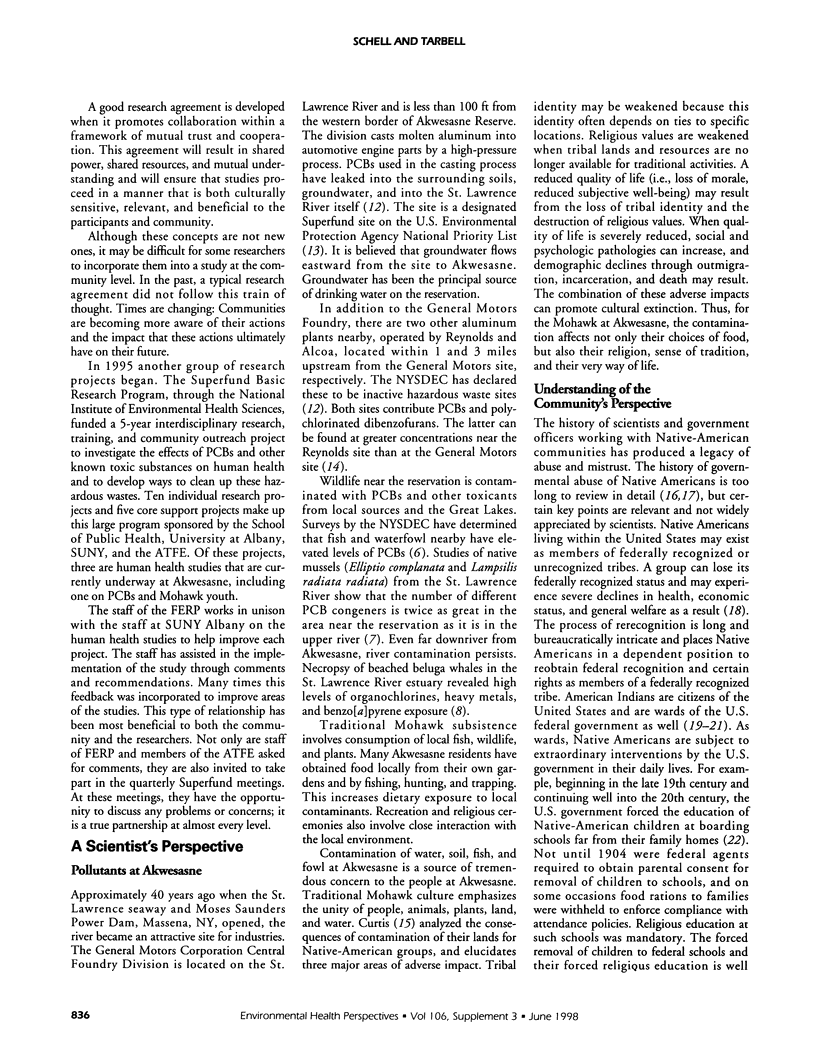
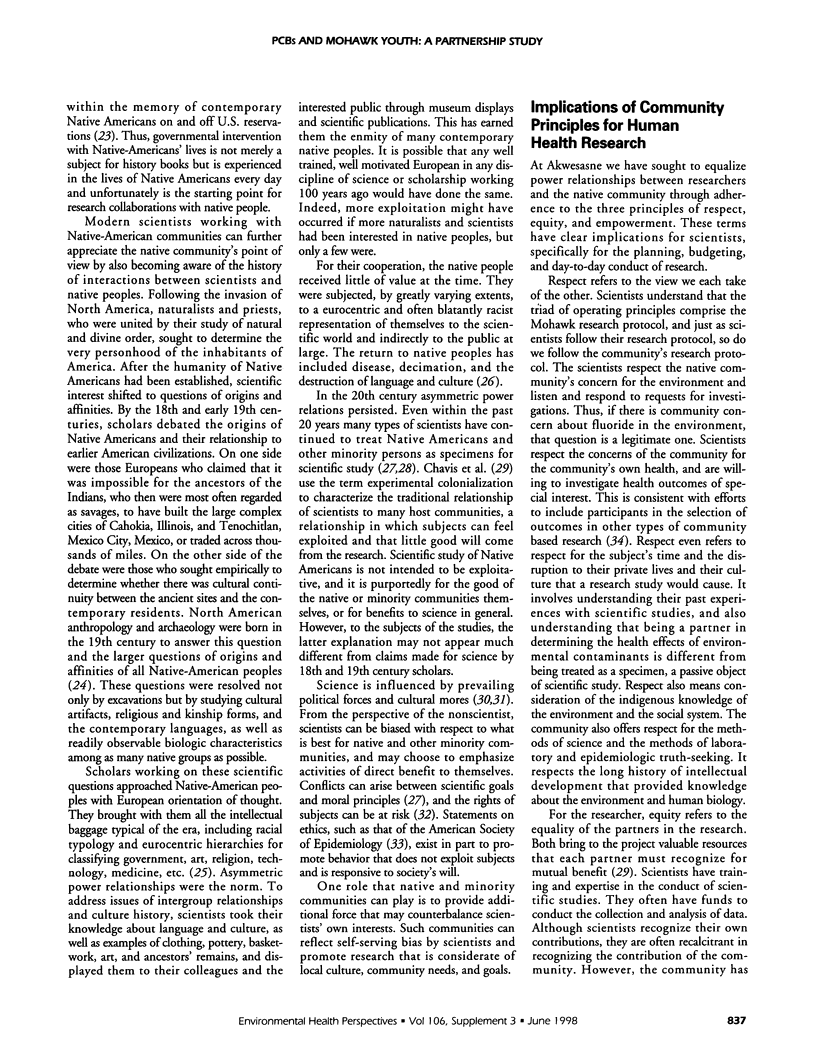

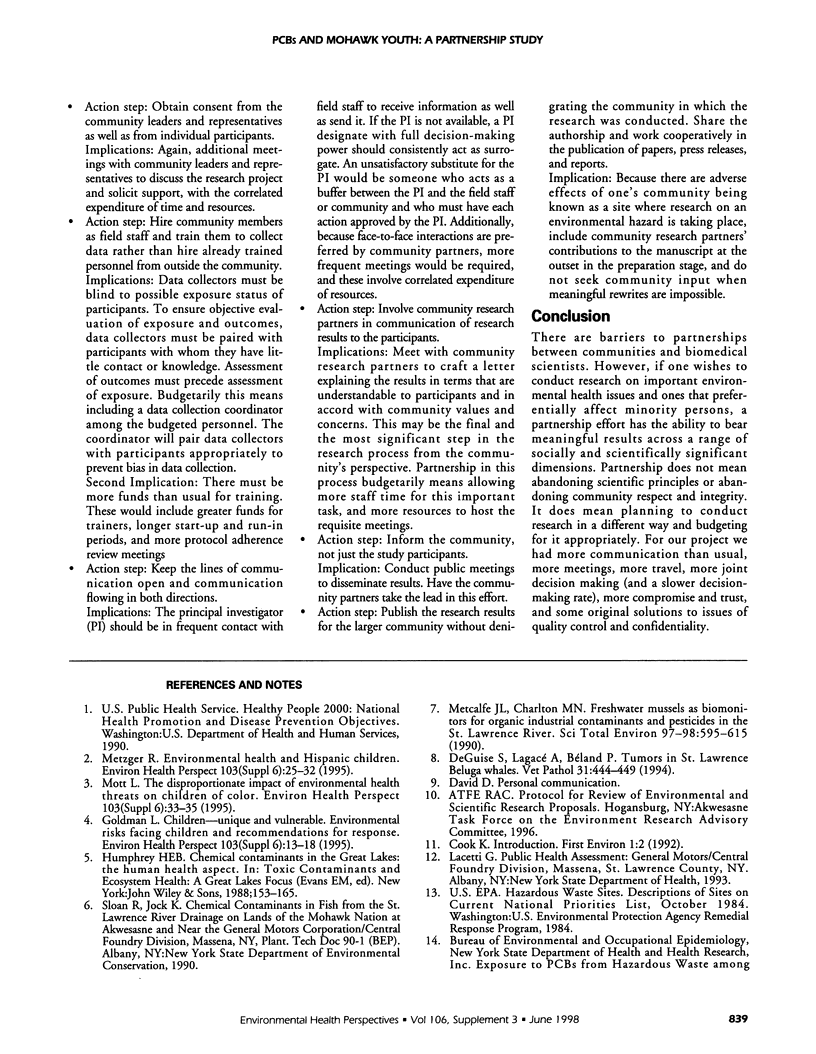
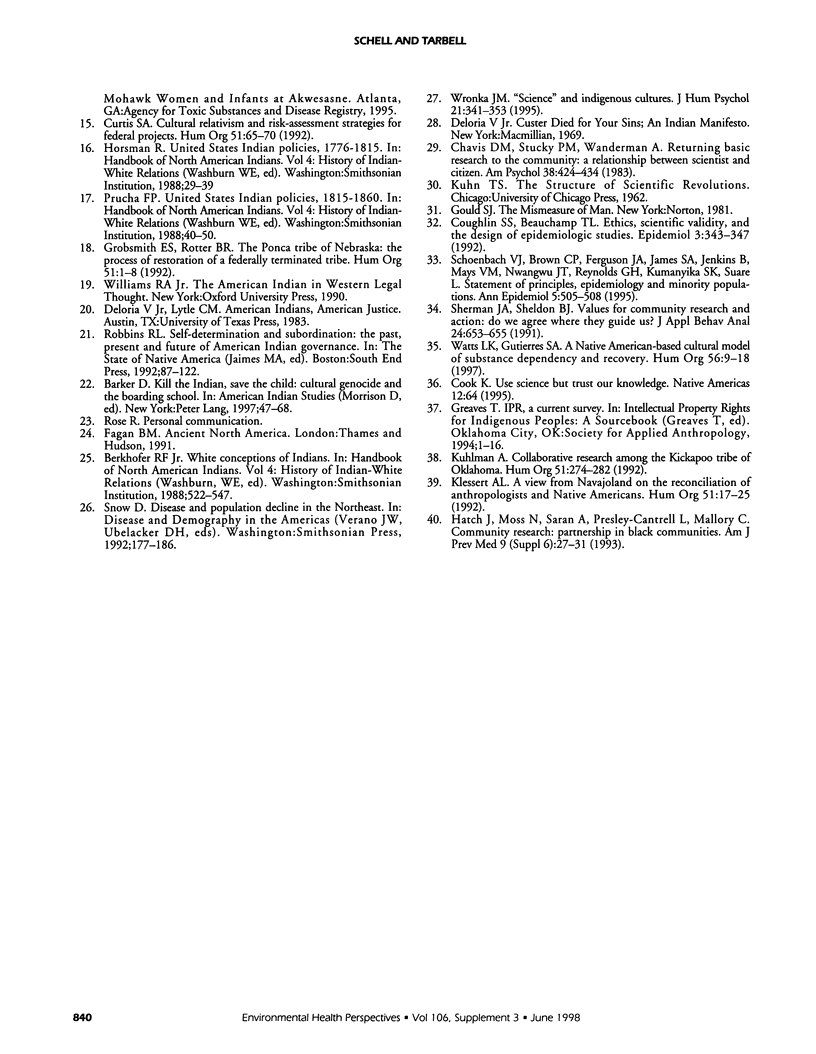
Selected References
These references are in PubMed. This may not be the complete list of references from this article.
- Coughlin S. S., Beauchamp T. L. Ethics, scientific validity, and the design of epidemiologic studies. Epidemiology. 1992 Jul;3(4):343–347. doi: 10.1097/00001648-199207000-00009. [DOI] [PubMed] [Google Scholar]
- De Guise S., Lagacé A., Béland P. Tumors in St. Lawrence beluga whales (Delphinapterus leucas) Vet Pathol. 1994 Jul;31(4):444–449. doi: 10.1177/030098589403100406. [DOI] [PubMed] [Google Scholar]
- Goldman L. R. Children--unique and vulnerable. Environmental risks facing children and recommendations for response. Environ Health Perspect. 1995 Sep;103 (Suppl 6):13–18. doi: 10.1289/ehp.95103s613. [DOI] [PMC free article] [PubMed] [Google Scholar]
- Hatch J., Moss N., Saran A., Presley-Cantrell L., Mallory C. Community research: partnership in black communities. Am J Prev Med. 1993 Nov-Dec;9(6 Suppl):27–34. [PubMed] [Google Scholar]
- Matanoski G. M., Nasca P. C., Swanson G. M., Vernon S. W., Fontham E., Perry Brown C., Ferguson J. A., James S. A., Jenkins B., Mays V. M. Statement of principles. Epidemiology and minority populations. Ann Epidemiol. 1995 Nov;5(6):505–508. doi: 10.1016/1047-2797(95)90002-0. [DOI] [PubMed] [Google Scholar]
- Metcalfe J. L., Charlton M. N. Freshwater mussels as biomonitors for organic industrial contaminants and pesticides in the St. Lawrence River. Sci Total Environ. 1990 Nov;97-98:595–615. doi: 10.1016/0048-9697(90)90264-u. [DOI] [PubMed] [Google Scholar]
- Metzger R., Delgado J. L., Herrell R. Environmental health and Hispanic children. Environ Health Perspect. 1995 Sep;103 (Suppl 6):25–32. doi: 10.1289/ehp.95103s625. [DOI] [PMC free article] [PubMed] [Google Scholar]
- Mott L. The disproportionate impact of environmental health threats on children of color. Environ Health Perspect. 1995 Sep;103 (Suppl 6):33–35. doi: 10.1289/ehp.95103s633. [DOI] [PMC free article] [PubMed] [Google Scholar]
- Sherman J. A., Sheldon J. B. Values for community research and action: do we agree where they guide us? J Appl Behav Anal. 1991 Winter;24(4):653–655. doi: 10.1901/jaba.1991.24-653. [DOI] [PMC free article] [PubMed] [Google Scholar]


